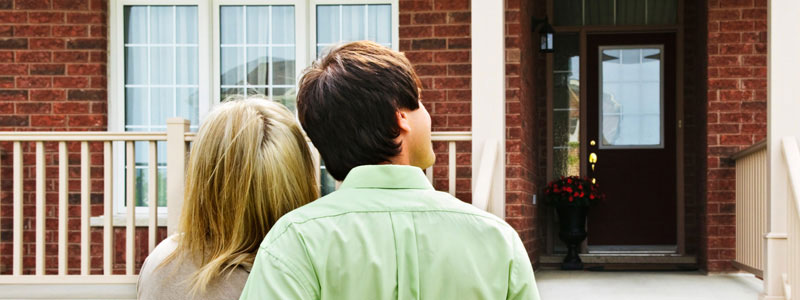What is a Covered Property?
Generally, covered properties are divided into four separate categories. The definitions of the property, and the extent of coverage vary by state, company and product. So it is important for the consumer to understand the definitions of the covered property.
LEARN MORE
Does My Policy Cover That?
Many people make incorrect assumptions that their homeowners policy is blanket coverage that protects them from all forms of damage and natural disasters.
LEARN MORE
How Much Insurance Is Enough?
Depending on the type of policy, the different dwelling coverage options could be:
LEARN MORE
Personal Property Coverage Choices
Depending on type of policy, the different personal property coverage options could be:
LEARN MORE
Optional Coverages
Additional coverages may either be included in your policy, or available for a separate price. Coverages like building code upgrades, which provide coverage for upgrades that the community requires for building codes when a home is being repaired or rebuilt as a result of a covered loss, may be available separately.
LEARN MORE
The four separate categories for your home, as defined by insurance companies, are:
1. Dwelling – The structure of the house is considered a covered property.
2. Other Structures – These are structures that are separate from the house, or connected to the house by a fence, wire or other form of connection, but not otherwise attached to the dwelling, such as a tool shed or detached garage.
3. Personal Property – The contents of your home are your personal property. This includes furniture, appliances and clothing. Not all personal property is covered. Items more appropriately covered under different forms of insurance may have limited or no coverage for loss. These items include, but are not limited to, money, jewelry and firearms.
4. Loss of Use – When a loss occurs due to a covered peril and the dwelling becomes uninhabitable, the cost of additional living expenses is covered. Reimbursement of additional living expenses covers the cost to the insured for maintaining a normal standard of living.
“Open Perils” and “Named Perils” Coverage
A peril, as referred to in an insurance policy, is a cause of loss, such as fire or theft. Coverage can be provided on an “all perils” basis, or a “named perils” basis. Named Perils policies list exactly what is covered by the policy, while Open Perils (or All Perils) policies will list what is excluded from coverage. Named Perils policies are generally more restrictive. A dwelling policy usually provides coverage for both the dwelling and contents on a named perils basis, while a homeowners policy usually provides coverage for the dwelling on an all perils basis, and for the contents on a named perils basis.
Package Versus Peril-Specific Coverage
A package policy provides coverage for multiple, but usually not all perils. A homeowners policy, for example, is a package policy typically providing coverage for the perils of fire, lightning, and extended coverage. Extended coverage includes coverage for the perils of windstorm, hail, explosion, riot, civil commotion, aircraft, vehicles, smoke, vandalism, malicious mischief, theft, and breakage of glass. Some policies, such as earthquake or flood policies, provide coverage for specific perils that are often excluded in package policies. Fire and sprinkler leakage damage as a result of an earthquake may be covered by a standard homeowners policy. To purchase the most appropriate insurance, it is important for you to consider what additional perils you may face. And, you should always verify what is covered in your specific policy.
Making this assumption can be a costly mistake. Please review your coverage and discuss shortcomings with your agent.
1. Earthquakes – Most property insurance policies exclude coverage for losses resulting from earthquakes (although they often cover losses related to fires following earthquakes). Separate policies are typically required to ensure coverage against losses from earthquakes. Some states with risk of loss from earthquakes have government mandated insurance plans that provide earthquake coverage to property owners who are unable to obtain insurance through the voluntary market. (See page 8 for explanation of voluntary and involuntary markets.)
2. Flood – Most property insurance policies exclude coverage for losses resulting from flood. So unless you purchase a flood policy, you do not have coverage for flood losses. (For a more comprehensive discussion of flood insurance, please see Preparing for a Flood, page 25.)
3. Hail – Most property insurance policies provide coverage for losses resulting from hail. Hail is a named peril, meaning for coverage to apply under a “Named Perils” policy, hail must be defined as a covered peril.
4. Hurricanes – Most property insurance policies provide coverage for losses resulting from hurricanes, except for flood loss associated with the hurricane. (See Preparing for a Flood, page 25, for more information.) However, some policies only provide limited coverage for hurricanes, or require that a higher deductible be purchased specifically for the hurricane peril. Most states with risk of loss from hurricanes have government mandated insurance plans that provide hurricane coverage to property owners who are unable to obtain insurance through the voluntary market. (See page 8 for explanation of voluntary and involuntary markets.)
5. Tornadoes – Most property insurance policies provide coverage for losses resulting from tornadoes (although they do not cover losses resulting from the peril of flood; see Preparing for a Flood, page 25, for insurance availability). While tornadoes may not be specifically mentioned as a covered form of loss, tornado losses are one event covered under the broader term windstorm. Windstorm includes tornadoes, straight-line winds and hurricanes. However, there may be instances where coverages and deductibles may apply specifically to hurricane and not to all windstorms.6. Wildfires – All property insurance policies provide coverage for losses resulting from fires. Depending on the level of exposure, you may need to consider a higher deductible to obtain coverage, or keep it affordable. Most states have coverage available via the FAIR plan, or a JUA, if the voluntary market is not willing to provide coverage.
6. Wildfires – All property insurance policies provide coverage for losses resulting from fires. Depending on the level of exposure, you may need to consider a higher deductible to obtain coverage, or keep it affordable. Most states have coverage available via the FAIR plan, or a JUA, if the voluntary market is not willing to provide coverage.
1. Replacement Cost Coverage
2. Actual Cash Value
3. Special Payment – loss is paid before dwelling is repaired, rebuilt or replaced.
4. Functional Replacement Cost or Market Value Coverage – repairs are made using common, modern materials and methods without deduction for depreciation unless repairs are not made, and if a total loss, the payment amount will be the market value of the home.
5. Stated Value – a selected value is established by the insured, and this value is the limit of liability.
Depending on the coverage you select at the time of purchase of your policy, if you should incur a loss, the settlement of that loss will vary. A loss can be settled based on a replacement cost, repair cost, or actual cash value basis. Replacement cost is not the market value of your home, nor is it the tax-assessed value. It is the cost to replace the damaged property, with no reduction for depreciation of the damaged property. Actual cash value is the cost to replace the damaged property reduced by an allowance for depreciation. Functional cost or market value (also known as repair cost) is the cost to repair the damaged property with equivalent construction for similar use. An example of functional replacement would be to replace a plaster wall with drywall. If stated value coverage is selected, the maximum amount paid at the time of loss is the value of the policy, even if the loss amount is larger than the value of the policy.
1. Replacement Cost Coverage
2. Actual Cash Value
What Does Insurance-to-Value Ratio Mean?
This is the relationship of the amount of insurance purchased to the replacement value of the property. It is important to have an accurate assessment of the replacement cost value of your home. If you do not, and then have a loss, the cost to actually replace your home may be more than your insurance policy will provide. That means you would be responsible for covering the difference. Major catastrophes, such as earthquakes, hurricanes, and wildfires can often create a demand surge for materials and labor, resulting in increased costs to replace damaged property. This must be considered when establishing the appropriate replacement cost for your property.
Most property policies require that the property be insured to at least 80% of the replacement cost, or loss payments will be reduced by a proportion of the insured value to 80% of replacement value. This is referred to as the coinsurance penalty.
It is also important to realize that other limits within your policy are a percentage of the dwelling coverage amount. For example, the limit of coverage for your personal property will usually be at 50% of the dwelling limit. Additional coverage is available via endorsement, and is typically increased if you purchase replacement cost coverage for your contents.
Replacement Cost Coverage
In order to qualify for replacement cost coverage, you will most likely be required to insure your property to at least 80% of the replacement cost. As long as this requirement is met, and if you have a total loss, your insurance policy will cover the total cost of replacing your home. Further, if the property is not insured to at least the 80% value, then the payment for partial losses may be reduced.
Additional Limits in Case of Total Loss
Many insurance companies offer an endorsement that will provide the full coverage to replace the property in the event of a total loss. Usually, the company requires that the property be insured to at least 100% of the replacement cost of the property in order to qualify for this additional coverage. As long as this requirement is met, if you have a total loss and it costs more to replace than your limit (from a misestimate or demand surge), your insurance policy will be increased. The amount of the increase depends on the endorsement purchased, and can be anywhere from 25% to 100%.
Also, optional coverage for perils, such as earthquake insurance, is often purchased to supplement a homeowners policy. Additionally, specific high value items may need to be “scheduled” on your policy. Insuring these high value items typically cost an additional premium. There are a multitude of optional coverages to choose from and they need to be discussed with your agent. Do not make the costly mistake of assuming things are covered.
All information referenced on qcfreequote.com is intended to provide a basic understanding of policy benefits. In no way does it provide a definitive explanation to policy benefits and should be considered a basic learning tool. Coverage, language and definitions will be specific to your policy and the information on this website should not be referenced when determining active benefits.



